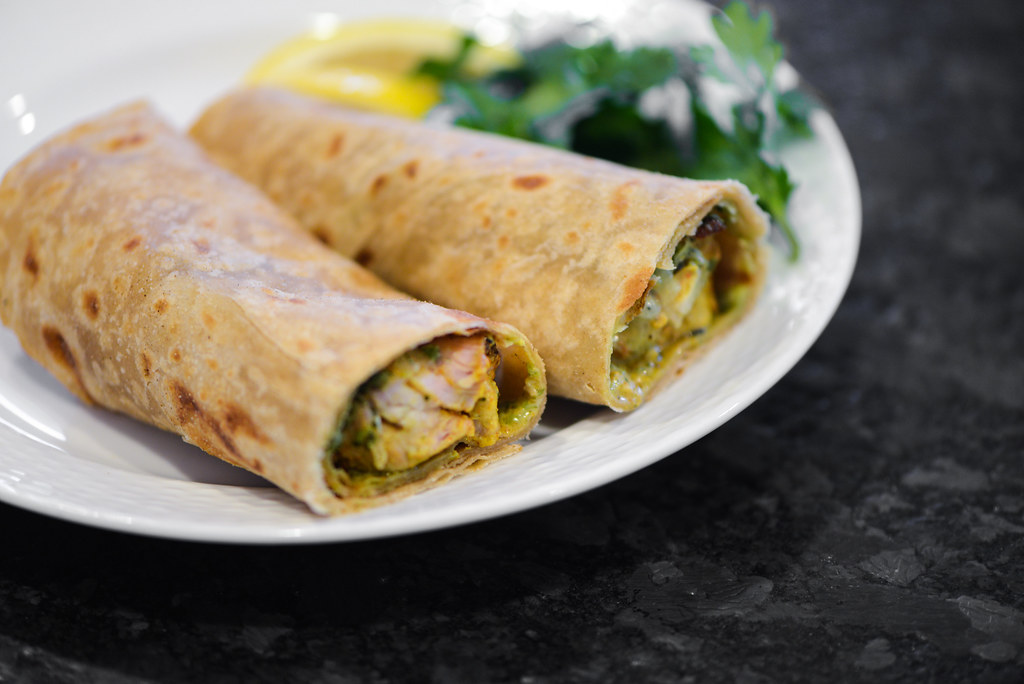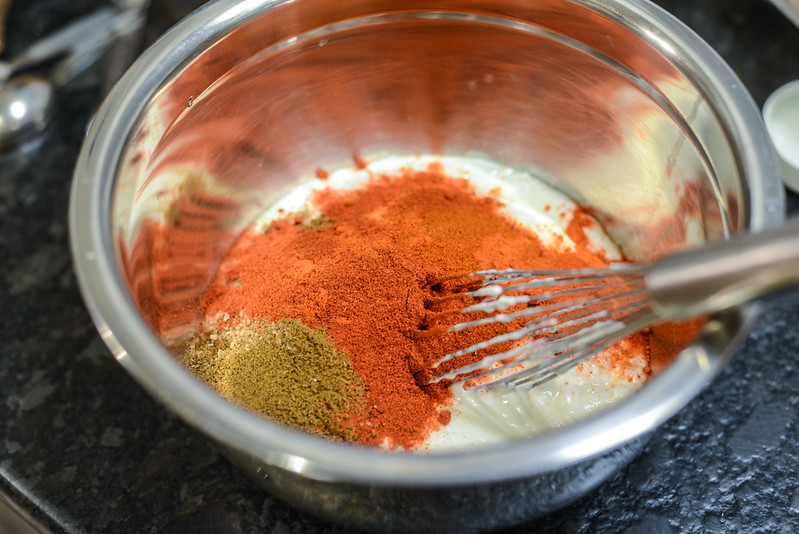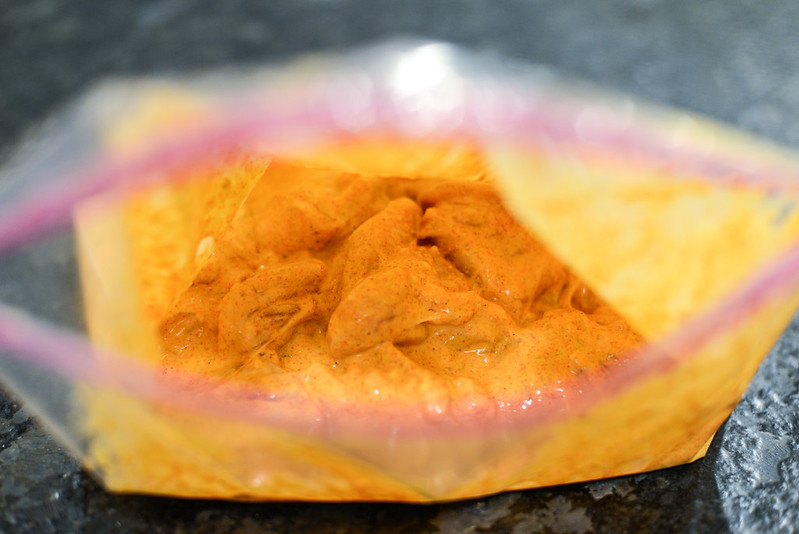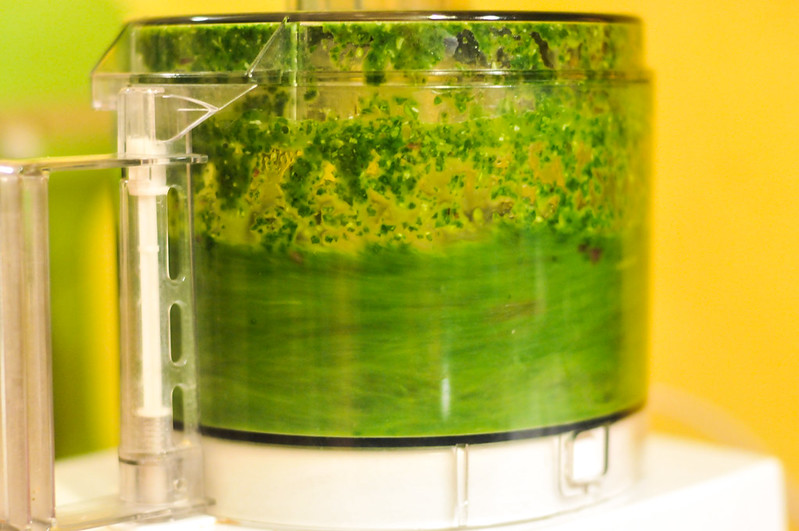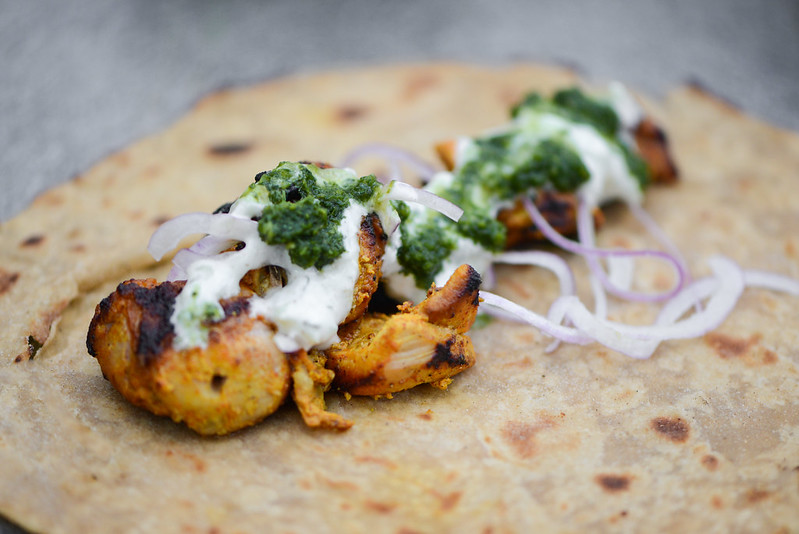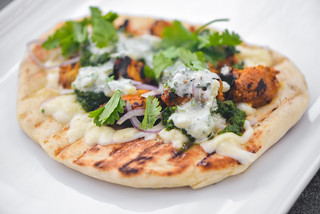Chicken Tikka Kati Rolls
Sometimes I wonder if sharing a recipe like these chicken tikka kati rolls is an exercise in futility—would anyone else take the time I did to make two sauces, bread, and tandoori chicken for what is essentially street food? My hope is the answer is yes, and that my choice not to lessen the time or effort to make these Indian rolls, that can be consumed as a snack or meal, results in at least one other person making them as good as they can be, which is how I would describe them after working through the recipe and giving it the Meatwave stamp of approval.
The extended effort was certainly aided by the fact that I made these during an Indian-inspired cookout and each of the individual pieces were also enjoyed in other contexts beyond the rolls themselves. The chicken tikka—boneless tandoori chicken—was a recipe I was working on in its own right and served as standalone skewers as well as formed into kati rolls. The only difference between the two was I used larger chunks of white meat for the skewers that were served by themselves, while for the kati rolls I relied on more flavorful and juicy thighs that I cubed up a little smaller to make them the right size for kati rolls.
Other than that, this recipe uses the same marinade comprised of a base of plain yogurt and lemon juice with ginger and garlic to provide some sharpness, cumin, paprika, coriander, and turmeric for an earthy spice, annatto powder to create the reddish color, and cayenne pepper for a touch of heat.
I married the cubed thighs and marinade together in a Ziploc bag and set it in the fridge for four hours. Due to the large amount of lemon juice here, super long marinades over eight hours aren't a good idea because the acid can break down the texture of the meat and render it somewhat mushy.
To me, you really need two sauces for these kati rolls be fully realized. Neither sauce is particularly hard to put together and they each bring there own unique, and important, touch to the final dish.
The first sauce is a mint chutney which is made by placing cilantro, mint, red onion, lemon juice, hot chilies, garlic, and ginger in a food processor and pulsing until everything is finely chopped. Then water is added to thin it out and create a "saucy" consistancy. The second sauce is a cucumber-mint raita, which only takes a little mixing of yogurt, cucumber, mint, salt, cumin, and cayenne to put together. This creamy sauce bring a cooling power that compliments and contrasts with the fresh and slightly spicy flavor of the chutney.
When cooking the chicken tikka using chicken breasts, I was hawkish on taking the temperature of the meat to avoid overcooking and drying out. I love thighs so much more thought because there's a wider range for error, and I usually go more by feel than temperature, knowing that a little bit too long on the grill won't do much harm to the end result. Still, it is always best to use temperature as your guide, and the skewers will be best when pulled when the chicken registers between 160-165°F in the center.
In the few minutes the chicken needed to rest before consuming, I quickly rewarmed the paratha I had made the day prior. I know it adds yet another step overall, but the quality of this tender, flaky bread when made fresh at home can't be overstated and I recommend learning the method and taking a crack at it for the absolute best kati rolls.
Finally, with the majority of the work behind me, it was time to put together the rolls. First I laid out a piece of paratha and removed pieces of chicken from the skewers and place them in the center of the bread. Then I spooned on the chutney and raita and finished it up with some thinly sliced red onions. With a final roll closed, it was time for eating.
After the first bite, memories of the work that went into these rolls faded and all that my mind could process in the moment were how good they were. Each component was excellent in its own right—the fresh and layered paratha, juicy and spiced chicken, herbal chutney, creamy raita, and sharp red onion. Mesh them altogether though and you're talking about some next level flavor. When I get kati rolls at restaurant, they're just as good, but with a gained appreciation for all that goes into their production after making them myself, I like kati rolls even more. Maybe that makes me weird and nobody else thinks working through all the separate items to create what is essentially a snack food heightens enjoyment, but by sharing the process with no comprises I'm hoping at least someone will feel the same way and come to the same conclusion about these excellent Indian rolls as I did.
